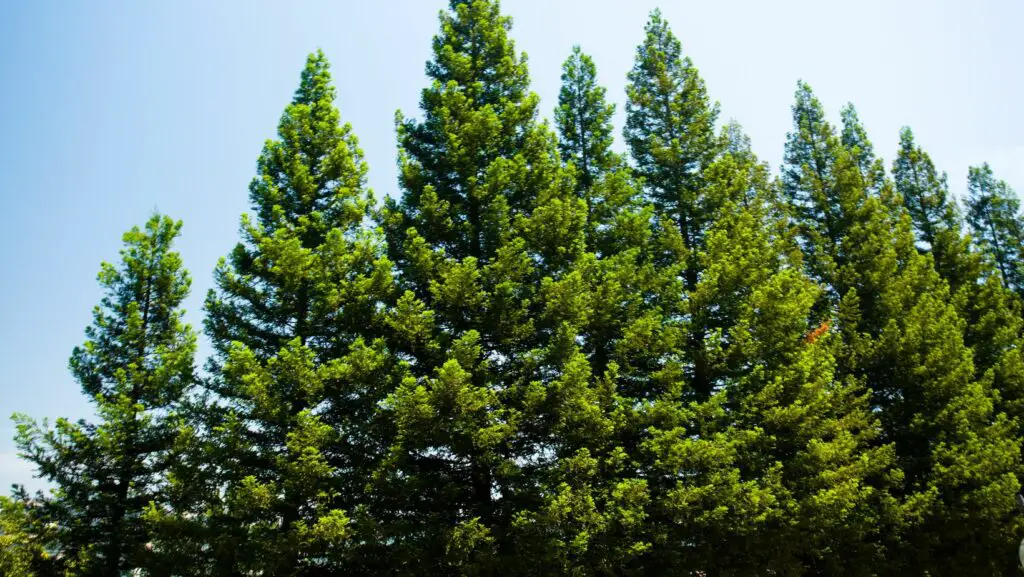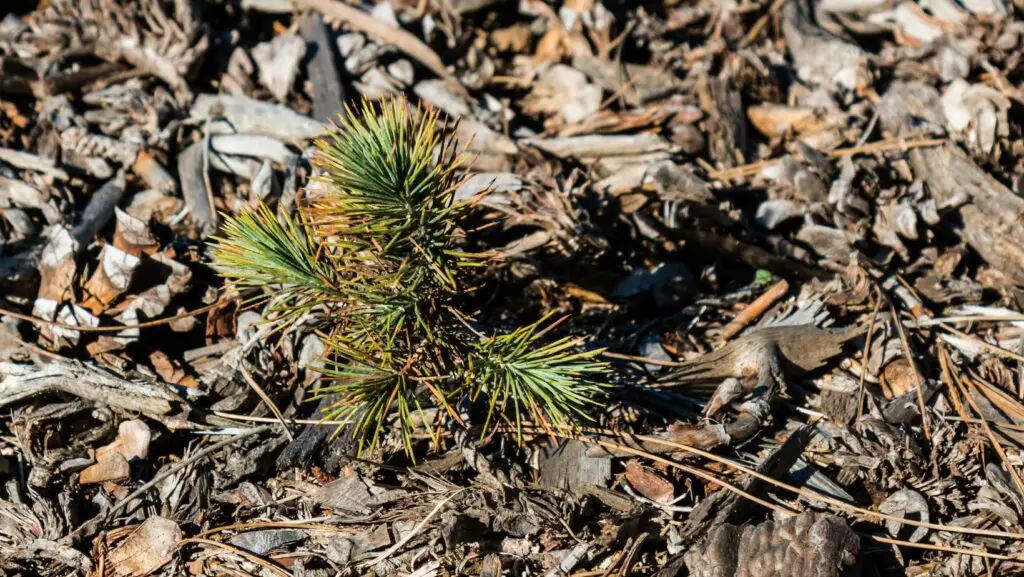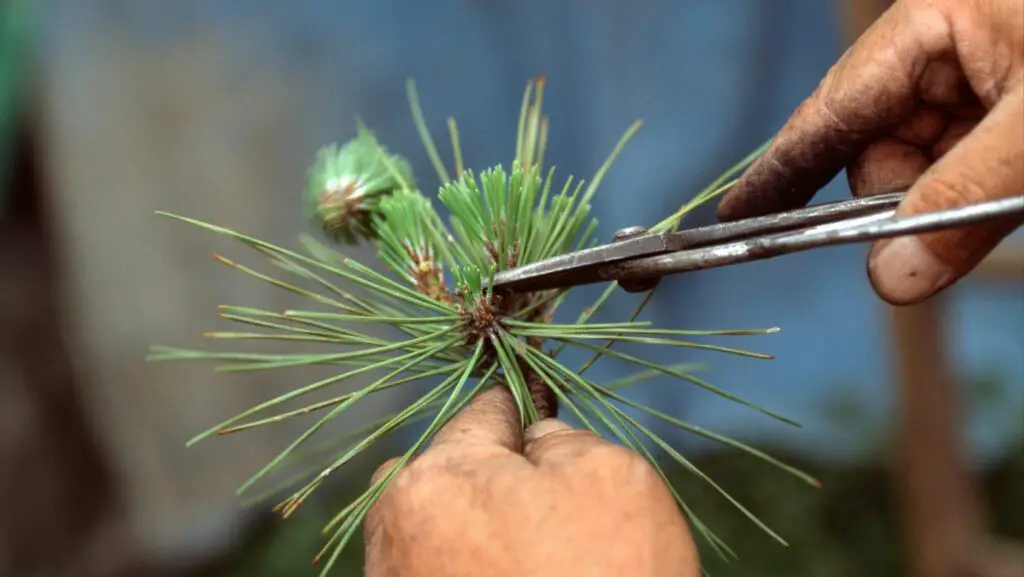
Pine trees usually take around 30 years to grow from seed. But once you grow them, you’ll be able to admire their beauty for a long time, especially if you consider some pine trees have lived for more than 300 years!
Growing pine trees is a straightforward process, one I’ve been doing for a couple of months. Even though these trees are native to North America (1), you could grow them anywhere in the world if you offer them the right growing conditions.
In this article, you’ll learn about how long it takes for pine trees to grow, what you can do to improve the tree’s growth rate, and the possible factors affecting your pine tree growth.
How long does a pine tree take to grow from seed
Are you thinking about growing your pine tree? Great news! You can germinate pine seeds and, if all the growing conditions are being met, your pine could start sprouting in less than two to four weeks.
You are probably wondering where you can find the pine seeds, right? Well, have you ever seen a pine cone? If so, the tree’s seeds are stored there, and these cones are female pine cones. That’s amazing!
So, if you are looking for pine seeds, you could harvest them yourself. Next time you see a pine cone during the fall season, try to see if you can spot the seeds inside little papery wings.
Alternatively, you could purchase pine tree seeds from your favorite garden shop Keep in mind that germinating rates are low at times, as some of the seeds may not be viable.
An easy way to know if they are viable is to place them in a glass filled with water. If the seed floats, discard it because that seed will not germinate.
How long does a pine tree take to grow from a sapling

Although starting your pine tree from a sapling could be more expensive, you will also save a lot of time, energy, and effort by not having to grow your pine tree from seed.
Depending on the variety you choose, you can expect your pine tree sapling to grow around two feet per year.
Yet, the most important thing to consider when growing a pine tree sapling is its humidity level. Whenever you touch the soil, the soil should be moist. If your tree lacks moisture, chances are your tree will have difficulties growing and establishing a healthy root system.
How to make a pine tree grow faster and better
- Make sure the soil is always moist.
- Try choosing the best type of pine tree to plant according to your zone. Ask a local tree expert to guide you throughout this choosing process.
- Always ensure the soil drains well. If your soil gets waterlogged, the pine’s roots could rot.
- Prune your tree consistently. You will need to do some research to find out when it’s the best time to prune the tree. Ideally, you should prune it just before the rainy season begins.
- Give it some love! Plants and trees do respond to your output.
Factors affecting the growth rate
Here are some tips for you to keep your eye (and hands) on:
Water
Pine trees are mold-susceptible. Avoid adding too much water so that the soil becomes muddy. On the contrary, add enough water so that whenever you touch the soil, it’s moist but never waterlogged.
It would also be an excellent idea to add mulch to the base of the tree. You could add grass clippings, straw, or, once your tree grows, pine needles.
Soil
Pine trees are known for being heavy feeders. In other words, they ‘consume’ many nutrients that are sometimes readily available in the soil.
Thus, it would be a good idea to apply organic fertilizer when your tree is growing. Ideally, you would do a soil test to see what minerals your soil may be lacking or have an excess of.
You will need to apply the right amount of fertilizer according to your site’s characteristics and the information on the fertilizer bag.
You must be careful though. If you add too much fertilizer, your tree could absorb all of it in one gulp, and it could stunt your tree. If you add too little, your tree will not have the necessary nutrients to thrive.
Temperature
Pine trees need to do photosynthesis throughout the year; thus, they also need full access to the sun to go through this process.
The ideal place for you to place a pine tree would be in an area that gets morning and afternoon soon. The pine tree shouldn’t receive midday or early afternoon sun. Too much sun could dry out the soil and damage the plant.
Not enough pruning

Don’t be afraid to prune your pine tree. On the contrary, think of it as the best service you could offer your tree.
Sometimes you will even need to trim the tree, especially if it has some dead needles or branches.
Whenever you prune a young tree, you are encouraging it to grow. Your tree will then redirect all its energy toward growing upward, instead of creating more branches.
Don’t get rid of the trimmed branches and needles though! Instead, you could compost them in a designated pile for at least a year (pine needles and branches are known for taking a long time to decompose).
When composting, you could add kitchen waste, paper, coffee grounds, and any other organic material you can find. After all these ingredients have decomposed, you could use the compost as mulch for your pine trees.
Choosing the wrong pine tree variety
Even though pine trees adapt well to new areas, you still need to pay close attention to the species of pine trees you are choosing. Trees are unique, even if they belong to the same tree species.
Talking to a local arborist will give you an excellent idea of the choices you have.
Try to plant the tree that will adapt the best to your local climate; this way, the pine tree will already be adapted to soil and climate conditions in your area. And that’s half of the journey for you to plant pine trees!
What are the main differences between pine trees and other trees?

One of the most unique characteristics of pine trees is that even though they produce seeds, they don’t produce flowers; as a result, they do not need pollinators to pollinate!
Instead, whenever a pine tree needs to pollinate, it will use airborne pollen, which is pollen released to nature that is carried by the wind.
Furthermore, pine trees have pointy needles that usually grow in clusters. These needles are very long because it’s an evergreen tree, pine trees will shed these needles throughout the year.
Where to plant a pine tree
Pine trees tend to grow almost everywhere, even in disturbed areas that were once affected by fire or any other natural disaster.
You should choose a sunny location to plant the pine tree, as they are considered shade intolerant.
However, pine trees should receive midday shade, at least during their first year of life.
FAQ
Here is a list of regular questions about pines.
Where do pine trees grow?
Pine trees are native to the American continent, more specifically to North America. However, nowadays, you can easily find pine trees worldwide. From Thailand to Argentina, this famous tree is everywhere!
Read our related article to learn everything about the areas where the pines grow.
How much does a pine tree grow per year?
A pine tree grows by 1 to 2 feet per year.
Pine trees take their time to grow. They would often take around 30 years to grow and reach full maturity.
Whenever a pine tree reaches this age, it is considered to be a fully grown-up tree.
From there onward, the tree will not only reduce its growth rate but it’ll produce more seeds as its energy is now focused on the ‘’offspring’’.
Why should I grow a pine tree?
There are many benefits associated with this tree that could give you a different perspective on why you should consider this tree.
For example, research has found that this tree has antioxidants that could possibly help fight chronic diseases. Another study shows that there is a high nutritional value within pine seeds.
Another interesting characteristic is pine trees are evergreen; thus, they will do photosynthesis throughout the winter or summer. This tree could help reduce carbon emissions, bring more fauna to your land, and provide a constant mulch for you to work with.
Final thoughts
Even though growing pine trees is a straightforward process, it will still take you a couple of years to grow your own trees.
Having a backyard filled with pine trees seems like a dream you can achieve in less than a couple of years!
If you start planting today, you will see your trees growing and making an ecological difference in your area within the first year of the trees’ lives! Get planting!
References
- https://www.ncbi.nlm.nih.gov/pmc/articles/PMC7815114/
- https://www.ncbi.nlm.nih.gov/pmc/articles/PMC8094515/
- https://www.ncbi.nlm.nih.gov/pmc/articles/PMC8309100/

Hi!
I am the guy behind Theyardable.com. I grew up on a homestead and I am here to share the knowledge I have and things I learn while living in the countryside.
